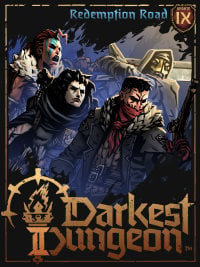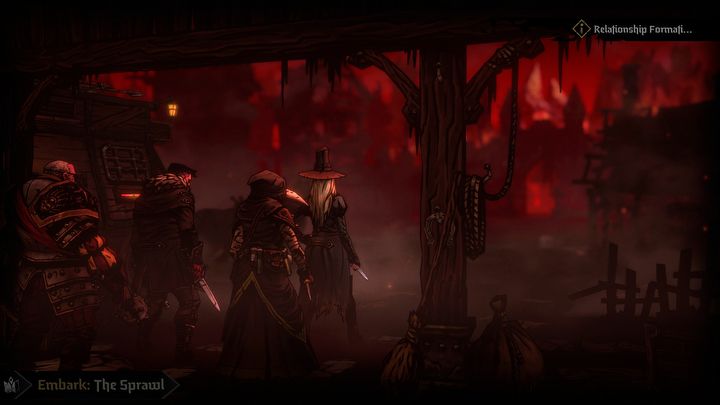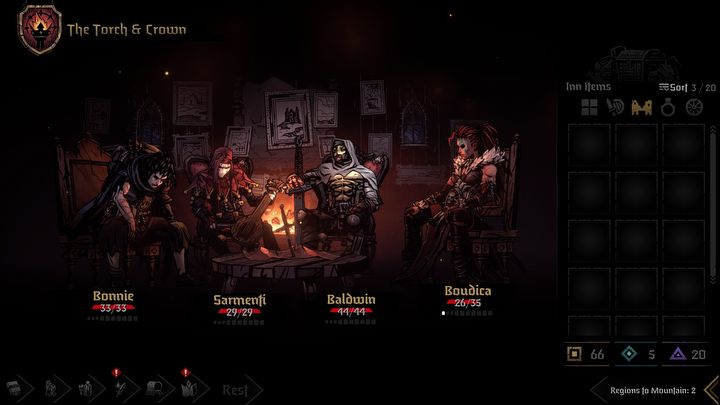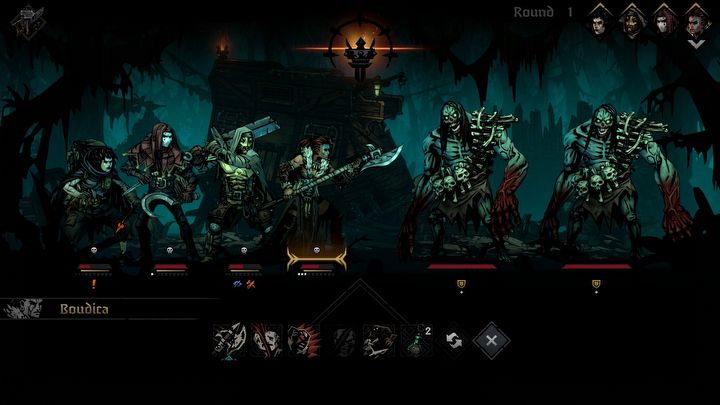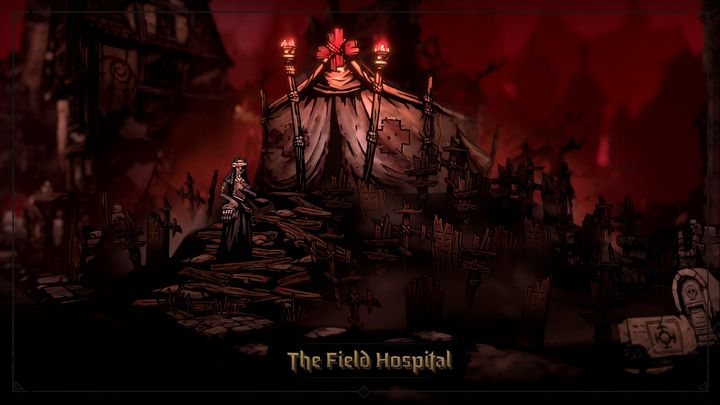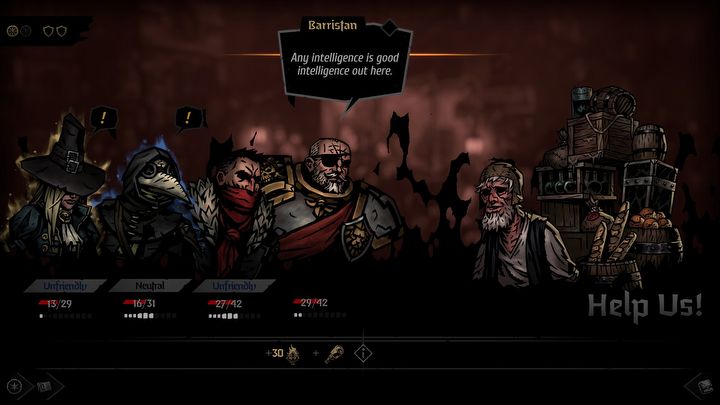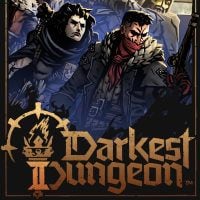Darkest Dungeon II Review: It Only Gets Darker
Darkest Dungeon II continues the original’s legacy, thrusting the player into incredibly dark, brutal, and complex strategic turn-based combat.
The review is based on the PC version.
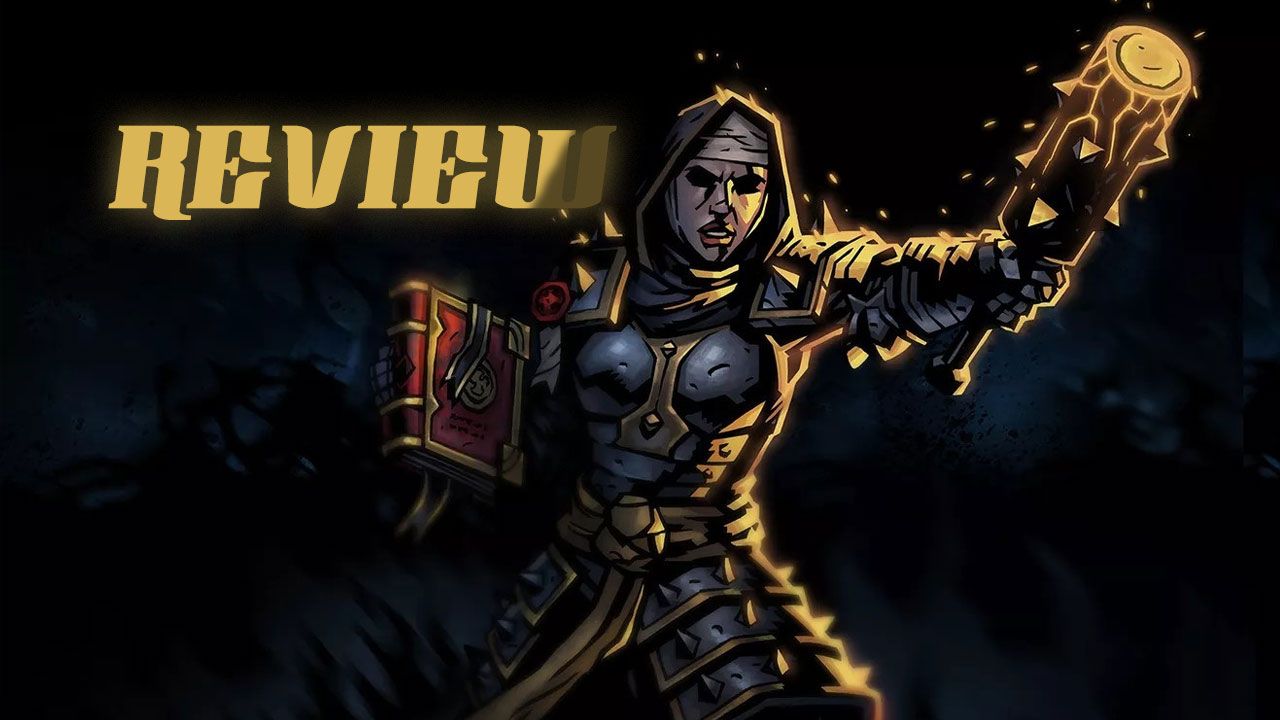
Video game masochists rejoice! The sequel to one of the most punishingly brutal tactical RPGs has finally left early access: Darkest Dungeon II. This roguelite dungeon crawler features an incredibly dark tone and setting where the player must gather a group of four characters who embark on a last-ditch effort to prevent the apocalypse.
- Incredibly complex strategic gameplay;
- Constant failures make eventual victories feel earned;
- Atmosphere, artwork, audio, and voice acting are top notch.
- Requires serious patience and determination;
- Tone is overall very dark and gruesome;
- Complex mechanics can be overwhelming.
Darkest Dungeon II has made some changes from the original. Now, rather than delving through a literal dungeon, the party traverses across a desolate landscape in a stagecoach that carries the last flame of hope. This road trip of the damned features branching pathways that often result in brutal turn-based combat encounters with cultists, zombies, and other monsters. Failure is not just a possibility, but an expectation.
Developer Red Hook Studios estimates it takes roughly fifty hours to defeat all of the bosses, so this will not be quick and easy. The party will perish. Each expedition is a matter of figuring out what information can be used for the next journey. With each new attempt characters will grow stronger, trinkets and baubles will be uncovered, and strategies will be tested. But keep an eye on the characters, any one of them could end up stabbing another in the back.
Forks in the Road
Darkest Dungeon II, much like its predecessor, has very complex mechanics. Characters can equip trinkets that give them passive bonuses, combat items that can be used in battle alongside various skills and attacks, as well as gain quirks that can be positive or negative. Characters can also develop affinity or disdain with one another, resulting in various combat bonuses or hindrances. And that’s not even getting into the details of the actual combat system.
This sequel is all about choices. Forks in the road will lead to very different encounters, from a dangerous and risky lair, a group of needy villagers, or something else entirely. Characters will have preferences, and going against their wishes will steer them on a dark path. Go against a character’s wishes too often and they might become resentful of the other party members, or it could lead to a stress-induced breakdown at just the wrong moment.
There are too many gameplay mechanics to cover everything in this review, but that’s part of the challenge. The first few attempts are destined for failure, but these initial forays are not about obtaining victory. The first attempt will teach the player how to handle the turn-based combat, the second attempt will focus more on discovering different locations along the paths, and, believe me, there will still be more to discover on each new attempt.
A Test of Resolve
Darkest Dungeon II maintains the same grimdark atmosphere as the original. Honestly, it’s a genuinely good idea to avoid playing this game during the day because of how dark it actually is. Avoiding daylight not only prevents glare on the screen but is also a simple way to upgrade immersion. In more ways than one, this is not a game meant to be played in the light of day.
Otherwise, Darkest Dungeon II is a serious graphical upgrade from the original. The characters have much more detail and the actions are much more cinematic. This visual flair adds drama to intense moments, such as when a character has a meltdown in the middle of a chaotic battle. (Which is something that can happen to the characters in the game, not just to the player after several tough losses.) If a character gains too much stress, their resolve is tested. A character may have a meltdown, which can have negative effects on the rest of the party, or they may remain resolute, instead inspiring their comrades. The risk inherent in this means that managing stress is just as important as managing hit points.
One major change from the original Darkest Dungeon is that the party is no longer viewed from the same side-perspective as the combat encounters. Traveling from location to location now takes place in a 3-D environment as the party rides in a stagecoach. While the characters will still exchange dialogue back and forth or comment on their situation, it doesn’t always build the same bond between player and party as the original game. But maybe that’s for the best, because a deeper bond only makes the inevitable deaths that much harder to handle.
The Brink of Collapse
The world of Darkest Dungeon II is being overwhelmed with hopelessness, also known as loathing. This strange shadowy substance can be encountered in void-touched locations, and when passing through routes that have an oblivion tear. The only way to lessen the effects of loathing is to engage in combat. Loathing left to grow will cause a party to slowly spiral into despair, sabotaging each other in combat and having stress-induced meltdowns. So while it might seem like a good idea to avoid fights when possible, it can end up leading to a quicker defeat.
The gameplay focuses around various confessions, with the first being Denial. Each confession involves traversing across several regions before culminating in a boss battle at the distant mountain. Along the way characters can stop at shrines of reflection to relive or confront past memories. This is a way to unlock new skills that could improve future journeys.
Darkest Dungeon II masterfully matches its core gameplay to its story. The world is on the brink of collapse, and all hope seems lost. Simultaneously, as a player, defeat is inevitable. This can make playing the game harrowing, and possibly even turn some potential players off entirely. But, in brutal difficulty, there is also incredibly rewarding victory. There is courage in standing up against near-certain doom.
Conclusion
Darkest Dungeon II continues the legacy of the original game as a brutally dark and difficult roguelite turn-based RPG. Much like the characters in the game, riding out in a hopeless effort to stave off the apocalypse, the player will find themself pushing forward despite certain defeat, with only a weak promise that next time it will be a little easier. It’s impressive that such a relentlessly challenging game can still have the player coming back for more.
First of all, it should be clear that this game is not for everyone. It has an incredibly dark tone with horrific monsters, cultists, and other cosmic horrors waiting around every corner. Characters are not exclusively honorable, unbreakable heroes. They will fail, and that failure will likely have to do with their own character flaws and petty disagreements. Bonding with the party characters is fine, just understand that these are deeply flawed characters, and they probably won’t make it out alive.
The gameplay is incredibly complex, meaning that the player will still be reading tutorials hours into playing for the first time. But if you have the patience to slowly learn, and accept that most early runs will not go well, this is a brilliantly crafted and rewarding game to play. Aside from the gameplay and the visuals, there is also a memorable soundtrack, chilling ambiance, and spot-on sound effects. Plus, Wayne June, the voice actor who gave an award nominated performance as The Ancestor in the first Darkest Dungeon, returns as a new character.
Our reviews are featured on Metacritic and OpenCritic.
Darkest Dungeon II rewards patient and determined players. Those who aren’t deterred by failure, and those who will keep pushing forward even in the face of certain doom. There are tons of strategies and tactics to explore, meaning there is a plethora of customization options and ways to play. Plus, each attempt will play out differently from the last, meaning that Darkest Dungeon II offers tons of replayability. If you can handle the darkest dungeons, the creeping gloom, and dozens of inevitable failures, then Darkest Dungeon II is a game worth trying (again, and again, and again).
Darkest Dungeon II
Darkest Dungeon II Review: It Only Gets Darker
Darkest Dungeon II continues the original’s legacy, thrusting the player into incredibly dark, brutal, and complex strategic turn-based combat.
